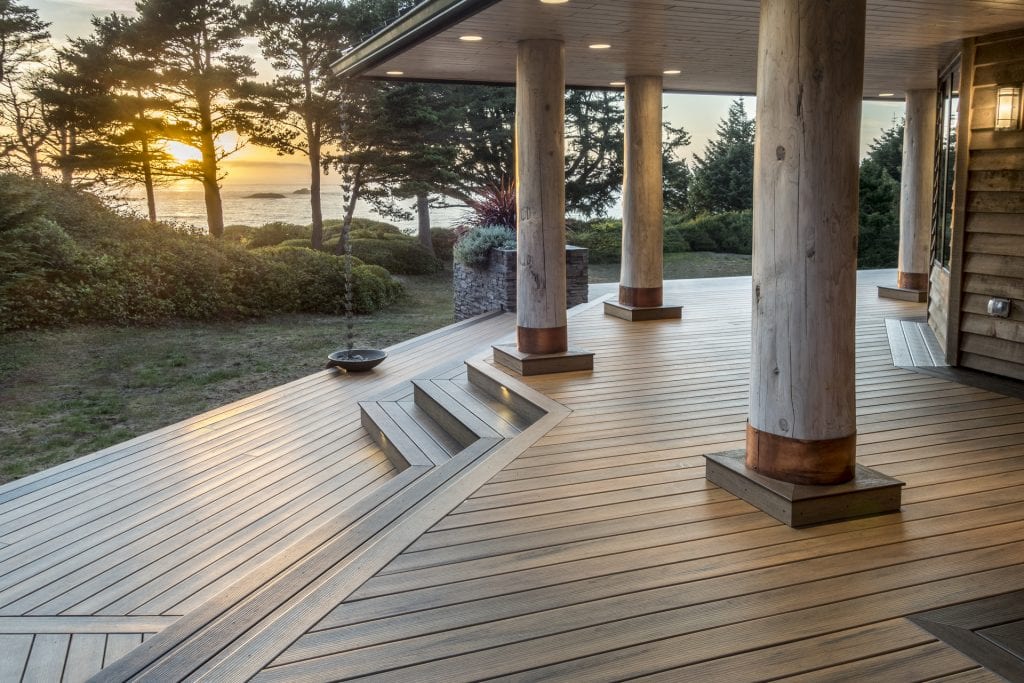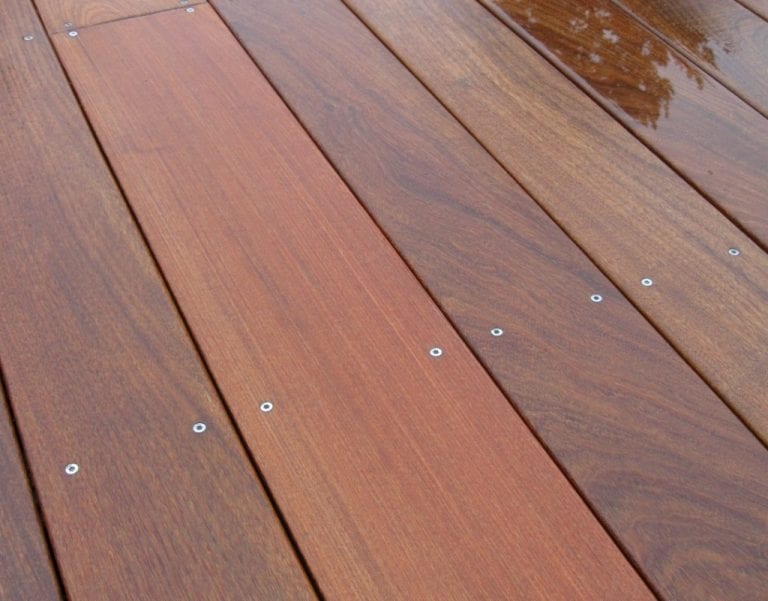Tigerwood is a beautiful exotic hardwood as it has some of the most striking color patterns, with a vibrant orange hue, along with dark streaks running along the length of the boards. Although it is very resistant to harsh climates, rot, decay, and insects, this doesn’t mean that you shouldn’t take preventive measures to avoid costly repairs in the future.
What preventive measures do tigerwood sellers make before delivering their products to customers?
Manufacturers usually kiln dry their boards to a certain level, to avoid cracking or shrinking. Other than kiln drying, other preventive maintenance steps will be performed by the contractor or the builder.
The main culprit of damaged wood is a rot-producing fungus. And fungi prospers when wood is constantly moist. The aim is to keep your decking as water resistant as possible while keeping the natural colors of this exotic wood. You can do this by using sealants, oils, waxes and then maintaining the protective surface by cleaning the decking regularly.

By following these basic steps, we can keep the condition of your tigerwood decking in top shape for a longer period of time:
1. Sealing
Applying a clear wood sealer can protect your deck from rain, which can then lead to excess moisture buildup and rot. It will also keep dirt and other damaging particles out of the naturally porous surface of the decking. Applying a protective seal will not protect the color of your decking, so unless you are happy with naturally graying colors of your decking, but you’ll be happy to know that the wood will last longer.
2. Staining
When you want to keep the color of your decking, a stain will do the job well while protecting the surface from harmful UV rays. Unfortunately, you won’t be able to apply a protective sealant. There are different types of stains, with different shades. The darker stains offer more protection from UV rays, but the lighter stains show more of the natural wood striations and colors. Stains do not provide a protective surface coat to prevent damage, but the next few tips will add can provide you with further protection from the elements.

Source: YouTube
3. Regular cleaning
Mud, rain, leaves, fruits, and all sorts of debris will constantly find their way to your decking. Regularly washing with just a hose and some soapy water will go a long way. Removing the debris will prevent further damage when they are stepped on and bore themselves into the decking, damaging the finish.
4. Waxing
In order to maintain your wood stain, waxing your decking once you notice some fading goes a long way. The floor wax maintains a smooth protective surface and keeps debris from embedding into the pores of the decking. Some waxes offer more UV protection and prolonged water resistance. Wax as often as you can in order to maintain the quality of your decking.
Do not be afraid to ask your lumber supplier and your contractor for more maintenance tips, but doing the above mentioned steps is a great start.

Source: West Wind Hardwood
